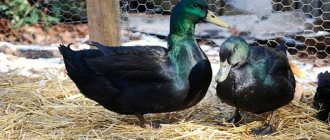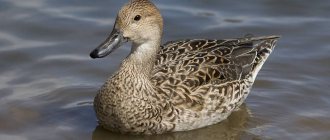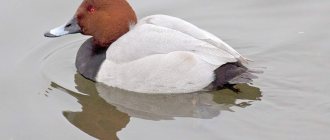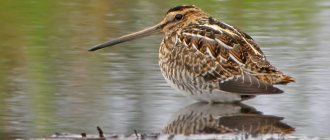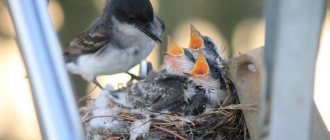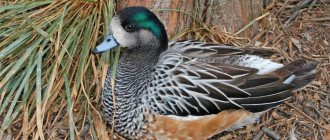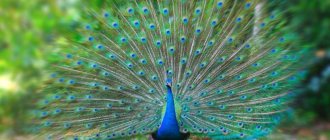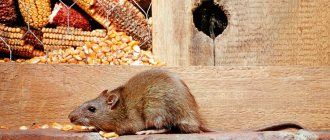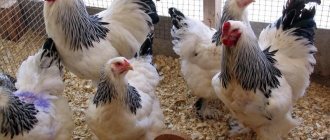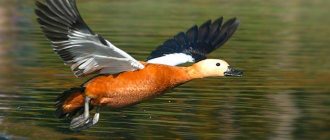The diving duck is an amazingly beautiful inhabitant of swamps and rivers. There are 4 varieties of these birds, differing not only in body size, but also in plumage color. This category currently includes pochards, ducks, teals and pink-headed ducks. These birds live mainly in the Northern Hemisphere. A large population of them has been identified in North America, where vast areas remain untouched by humans. A distinctive feature of all diving ducks is their ability to forage at great depths. This allows them to survive even in the harshest climatic zones. Few Russian ducks belong to the diving category. This is due to the characteristics of the reservoirs available in the country.
The diving duck is an amazingly beautiful inhabitant of swamps and rivers
Representatives of the genus of dives
Several representatives of the extensive duck family belong to this category. The behavior of these birds has long attracted the attention of ornithologists, thanks to which several genera of ducks have received the name diving. Even now, everything is not known about these unique creatures and the reasons for this behavior. Currently, this genus of ducks includes 3 species of birds, including the red-eyed, red-crested and pampas pochard. These creatures are medium in size, have a relatively large head and a short neck. While swimming, they try to keep their tail down, so their landing position on the water is very low. These birds do not collect food on the surface, but dive to a certain depth for it. It is worth considering in more detail all representatives of this genus.
The red-nosed duck has the following distinctive features:
- weight - up to 1.5 kg;
- body length - up to 55 cm.
- brown plumage and red nose in males;
- gray-brown plumage in females.
There are 4 varieties of these birds, differing not only in body size, but also in plumage color.
The color of the bird's coat changes throughout the season. This is especially true for drakes. These diving ducks have gray-brown plumage on the back, wings and top of the head throughout the year. Only the cheeks and abdomen are distinguished by a light shade. In summer, drakes are practically no different from females, but they still have red beaks and a crest. Drakes transform for the breeding season. Their upper body takes on a rich red hue. The crest, formed from elongated feathers, visually greatly enlarges the head. The plumage on the belly becomes black and shiny. The sides and mirrors acquire a characteristic white color, which gives males contrast and makes them attractive to partners. Thus, the red-headed duck is such only in the spring.
Chicks
The ducklings emerge strong. They are covered with thick white down, have a large beak and strong paws. The very next day after birth, the offspring leaves the nest on their own and swims with their parents. In the first couple of weeks, the chicks cannot obtain food themselves and are completely dependent on the adults. Their diet includes small midges, fry, snails and algae. After about two months, the offspring are fully feathered and can fly. Young birds gather in groups in which they move together. Puberty in coots occurs after a year, and in some cases after two years.
Not everyone knows the name of a black duck with a white beak. But despite this, it is of great interest to wildlife lovers. This is a truly interesting and noteworthy species of waterfowl.
Duck ducks
These birds also dive to depths in order to get food for themselves. Ducks are very similar in appearance to ducks, so representatives of these genera are often confused with each other. These birds are distinguished by their small size, short neck and stocky body. The head of the duck is usually large and crowned with a relatively large black or gray beak. The following species of this genus of birds are known:
- Baer's duck;
- crested;
- polar;
- white-eyed duck;
- red-headed
These birds also dive to depths to get food.
Each variant of birds has its own characteristics. For example, the tufted duck reaches a weight of about 750 g and 45 cm in length. The drake's head is blue-green with a characteristic purple tint. The bird's body is covered with black feathers, but the belly and sides are white. The drakes have a small crest at the back. Females have more modest speckled plumage.
Habitat
The habitat of ducks is the entire globe. They are not found only at the South and North Poles. Some species are distributed over large areas. For example, mallards inhabit almost the entire Northern Hemisphere, from the forest-tundra to the subtropical zone. There are those in this family whose range is limited to 1000-2000 km² or a ridge of islands.
Migration is carried out by species living in northern latitudes, where water bodies completely freeze in winter. From arid tropical regions, birds migrate to more humid equatorial or subtropical regions. Flights are short, medium and long. The mallard of the Urals and Western Siberia reaches the coasts of the Balkans and North Africa. Mandarin ducks from the Far East fly only to Japan and the northwestern part of China.
For the winter, mallards move closer to people - to city parks with ponds, lakes near villages. Many people specifically come to feed wild ducks in winter so that they do not die from the cold and lack of food.
All species live near water. They lead a diurnal lifestyle; at night, birds see poorly. Eider ducks and long-tailed ducks prefer the sea coast. They often nest on rocks and small uninhabited islands. These species live in large flocks, even during the breeding season they do not completely break into pairs.
Goldeneyes, wood and wood ducks, and mandarin ducks prefer ponds surrounded by dense trees. They make their nests in hollows, high above the ground. Often these species settle in the mountains, near fast rivers. Diving species live near the sea or deep bodies of water. Birds that search for food on the surface prefer shallow waters, shallow swamps and lakes.
Mallards live both near fresh rivers and lakes and on the seashore. But they do not like stormy mountain rivers. Most species from the temperate zone prefer to settle near bodies of water overgrown with green aquatic vegetation. They make their nests in thickets. The exceptions are sardines and shelducks, which live in the steppes and on lakes with bare shores.
Wild ducks live everywhere except the South and North Poles
Gallery: dive (25 photos)
Mallard feeding
The mallard duck is an almost omnivorous bird. Her diet contains a lot of food of plant and animal origin. It feeds in shallow water, plunging its head and neck into it and pushing off with its legs. Thus, it becomes almost vertical in the water, with its tail up. It can also look for food and eat on land.
The Mallard feeds in shallow water, plunging its head, neck and pushing off with its legs
The duck feels food with its beak thanks to the soft skin on it, which has a tactile function. Among plant foods, it prefers aquatic plants: duckweed, hornwort, sedge. In autumn it can also consume cereals and some forest and steppe grasses. Among animal foods, the mallard duck loves insects, fish, shellfish, frogs, caviar, and fry.
Interesting!
This bird is considered useful for the destruction of various insect pests.
After hatching from eggs, ducklings in the first days of life eat only moving objects, that is, various insects. Thus, they receive food rich in protein, which they need for normal development. And only from the 5th day of life they also begin to eat duckweed and other aquatic crops.
diving teal
Another representative of the duck family, which obtains its food at the bottom of reservoirs, deserves special attention. Marbled teal differs from its relatives not only in appearance, but also in its way of life. This is a relatively small bird, reaching only 600 g. The plumage color of ducks and drakes is equally brown-gray. These birds have a compact, neat body.
Marbled teal is found in Russia, Asian countries, as well as India and Spain. These birds have a calm character, so it rarely makes any sounds and behaves very quietly. Few other diving ducks fly into trees like this one and spend long periods of time sitting on the branches.
These birds live in reservoirs with dense thickets along the banks. After mating, the duck builds the nest itself. These birds try to find a fallen log or hollow in order to create a safe place where they can lay eggs and hatch chicks. Marbled teals are capable of diving to very great depths. When swimming, they use not only their webbed feet, but also their tail. These birds eat large quantities of small crustaceans, mollusks, fly larvae and snails. Plant foods make up only a small percentage of a duck's diet. From the northern regions, these birds migrate for the winter to the Middle East and Africa. Currently, the population of these ducks is rapidly declining. The reason for this is not only the rapid pollution of their nesting sites and the drainage of reservoirs, but also hunting.
Characteristics
The main feature of representatives of diving breeds is the low landing of the bird in the water. A swimming duck is immersed quite deeply, its tail is completely lowered into the water.
Ducks of this group spend most of their lives in water bodies, coming ashore only for nesting. They are excellent divers (hence the name), diving to depths of several meters. The purpose of the bird's dive is to obtain food: vegetation, small living organisms (crustaceans, mollusks, insects) and even fish.
Divers fly poorly - taking off heavily, flapping their wings noisily. Ducks need a running start to get into the air.
Pink-headed ducks
Some waterfowl are critically endangered or have already become extinct due to human interference in their natural habitat. A striking example is the pink-headed pochard. Ornithologists have not yet given up hope of finding living representatives of this species. However, the last time these birds were seen was in 1945.
It is believed that pink-headed ducks may still survive in some swampy areas of northern Myanmar where conditions are not suitable for human habitation. The plumage on the head was bright red. It contrasts well with the black body cover. The tips of the flight feathers are white. These birds were modest in size. They reach a length of about 42-47 cm. They built nests in tall grass. The clutch contained no more than 6-7 eggs with creamy white shells.
The pink-headed duck lived in low-lying ponds and swamps where there were tall grasses along the banks. It is believed that these birds fed mainly on mollusks, small crustaceans and algae. In search of food they could dive to great depths. Some ornithologists believe that this originally small species became extinct due to hunting and desiccation of the bird's natural habitats. Although several attempts have been made to find representatives of this species over the past 50 years, they have been unsuccessful.
Breeding
The main concern of a poultry farmer involved in breeding crested breeds is the presence of a crest in the offspring.
If one of the parents does not have this decoration on its head, then half of the ducklings will not have it. Therefore, it is important to ensure that both the female and the male have tufts. Although its presence even in both partners does not guarantee the appearance of this trait in the offspring
In addition, the crests may have defects: small, forked, or falling to the side. The torso may be uncharacteristically large or small.
Ducks begin laying eggs at the age of 6 months. One tufted duck can lay about 60 eggs per year, less often – up to 120 eggs. If hatching is expected naturally, then it is necessary to prepare the nest. It is usually made from hay or straw.
Approximately 27 days after laying, the chicks appear. It is usually recommended to transplant them into a separate box to avoid injury. An incubator is often used to hatch ducklings. It is set to thirty degrees Celsius. In the first days of life, ducklings are fed quite often - about six times a day. After a week, the number of feedings can be reduced to three times. The chicks grow quickly, and within a month they reach a weight of 500 grams. A duck can take them to a pond and teach them independence.
You can watch about tufted ducks in the following video.
Habitats of the luxurious wigeon.
The luxurious wigeon prefers to stay in bodies of fresh water. Found in lakes and swamps. Lives on rivers with slow currents.
Reproduction of the luxurious wigeon.
The breeding season for magnificent wigeons is from August to December. This is a monogamous species of duck. Mating behavior is characterized by mutual head movements and vocalizations.
Both birds swim in the water one behind the other, and the male regularly turns his head towards the female as he swims ahead. Pairs are formed already in a flock, which sometimes numbers up to 100 individuals.
Ducks nest in separate pairs or small groups. The female chooses a nesting site among tall grass or near bushes at a short distance from the water. The nest is camouflaged in dense vegetation. There are 6-10 white or cream eggs in a clutch. The male does not help with incubation, but stays nearby, guarding the female on the nest. Incubation lasts 24-26 days. The chicks are covered on top with dark brown down with yellowish spots, their underparts are yellow, their heads are a beautiful reddish color with a white line on the back. Thin brown lines are visible near the eyes. After the chicks hatch, the male returns and helps guide the ducklings. Then he leaves the family for the molting period. Adult birds take care of the offspring, sometimes the male alone accompanies the ducklings. In some areas, couples may raise a second brood. Magnificent wigeons breed at the age of one year and form pairs for a long time.
Shedding period
The mallard duck molts twice a year. In autumn, incomplete molting is observed, and in summer, complete molting is observed. In drakes, complete molting occurs when females sit down to incubate eggs after mating. They molt for 2 months, and within 25 days they lose the ability to fly.
Females molt completely only after their chicks learn to fly. They also molt for 2 months and cannot take flight for about 25 days. At this time, the bird is vulnerable and is an easy prey for predators. If the female loses her clutch, molting begins earlier.
The autumn feather change begins in mid-October. It is not full and the bird can fly. And yet the mallard duck, during even partial molting, practically does not fly and for the most part moves on water or land.
Interesting!
If the female has not had a mate and does not lay eggs, her complete molt will occur during the same period as the drakes.
Mallard duck is a delicacy for many birds of prey
Origin of the species
The great grebes belong to the group of grebes. Initially they were combined with loons, but now they are classified as a separate order of waterfowl. Research has shown that grebes create a separate lineage that separated in the process of evolution from loons quite a long time ago.
Grebes, like flamingos, belong to the Colymbea branch. This also includes hazel grouse and pigeons. At least eleven common characteristics have been discovered that are not found in other bird species.
Characteristics
In addition to the question of what a black duck with a white beak is called, many are also interested in its characteristics.
- Body length - 36-38 centimeters.
- The wingspan is 19.5-23.5 centimeters.
- Weight is on average one kilogram, some individuals can reach a weight of 1.5 kilograms.
- The head is medium in size, with a white leathery growth on the forehead.
- Small white beak, compressed at the sides.
- Eyes with bright red irises.
- The body is knitted, strong, slightly flattened on the sides.
- The tail is short, the feathers on it are soft.
- The paws are yellowish-orange, the toes are gray.
- There are no membranes on the paws, but each toe has some kind of blades along the edges that help swim in the water.
- The color ranges from dark gray to black, the chest and belly are slightly lighter, smoky gray. Young black ducks have brown plumage with a grayish throat and belly.
It is worth noting that the name of a black duck with a white beak sounds different among people. Hunters and lovers of wild birds call them bald hens or water hens.
Habitat
These beautiful birds originally lived in East Asia. In Russia, they currently nest in the Primorsky and Khabarovsk Territories, in the Amur and Sakhalin regions. In the northern regions, mandarin ducks behave like migratory birds. In September they fly to China and Japan for the winter.
Mandarin ducks have a characteristic feature: they love to live on trees. Sometimes their hollows are found at a height of six meters. This unusual way of life forced the ducks to learn to jump from heights without any damage to themselves.
Mandarin ducks live near mountain streams, over which trees hang, and in forests near ponds. In Russia, due to its small number, this breed is listed in the Red Book. You cannot hunt such ducks; they are bred in parks and gardens as an ornamental breed.
As we have already said, birds prefer to nest near water, giving preference to windbreaks. On the female's command, the ducklings dive straight from the hollow and then learn to swim. The diet of mandarin ducks includes fish, beetles, snails, plant seeds, acorns and frogs. Ducks can rise vertically in the air, and therefore they can easily find food in oak plantings. In addition, tangerines feed on rice, cereal shoots, and buckwheat.
Reproduction
Wild ducks begin laying eggs in the spring, from April to May. The female brings one egg per day, after 8-12 eggs are collected, the female sits on the nest and waits for the ducklings to appear. Incubation lasts on average 25-30 days, ducklings hatch almost simultaneously.
Basically, all species of wild ducks nest alone, making their nests on the ground. Only mandarin ducks, mergansers and goldeneyes nest in tree hollows, shelducks fly in burrows, and sardines bury their eggs in the ground. During the nesting period, the northern common eider duck lives in colonies of up to one hundred individuals.
Almost all types of ducks can lay eggs in other people’s nests and, often, females hatch both their own and other people’s eggs. Females take care of the offspring, and only among the Shelduck and Shelduck do males help care for the chicks.
Sex differences
Sexual differences in the coot are weakly expressed. Drakes are slightly larger than ducks and also have a larger growth on their forehead. In terms of genetics and appearance, the black duck is closest to the moorhen. Sometimes these species combine, resulting in hybrid offspring. Such babies have characteristics of both types of ducks, and the growth on the forehead is not white (like coots) or bright red (like moorhens), but orange.

